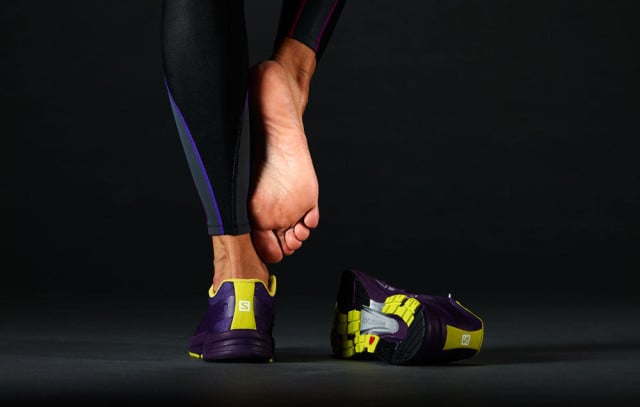Fix Those Nagging Foot Cramps
The causes are numerous, so beat the spasms before they strike.
The causes are numerous, so beat the spasms before they strike. – By Susan Paul

Historically, cramping has been thought to be because of dehydration and/or an imbalance of electrolytes. Today, the current thinking on the cause is believed to be more because of muscle fatigue.
When the muscle fatigues, a failure in the communication process between the brain and the muscle occurs, resulting in the muscle contracting, but not relaxing afterward, leaving you with a muscle cramp.
Muscle fatigue can be caused by many factors like dehydration, overtraining, or lack of circulation. To rule out hydration and electrolyte issues, simply increase your hydration and add some electrolytes. Proper hydration and electrolytes provide nourishment for hard working muscles and it’s easy to adjust your intake to rule this factor out.
Next on the list of possible fatigue factors would be training and mileage. Are you doing too much, too soon? Have you increased your mileage or added speedwork recently? If so, try cutting back your weekly mileage volume by one-third for a couple of weeks and rebuild gradually. Follow the general rule of increasing weekly mileage volume by no more than 10 percent a week.
Another factor that can contribute to muscle fatigue are your shoes, both your running shoes and your day-to-day shoes. Be certain your shoes are not limiting your circulation in any way. For your running shoes, obtain a shoe that’s fitted by your local running store to be sure you are in the right for you. (Here’s what you should look for with running shoes.)
Replace your running shoes often, usually between 480 to 800 kilometres. For your dress shoes, be sure the shoe and the toe box are wide enough to accommodate your foot. Your shoe should also provide adequate arch support and be of an appropriate heel height for you. (This can mean placing comfort and function over vanity, sorry!)
Improving circulation, or blood flow, is of great importance when dealing with muscle cramps. Circulation provides nutrition and oxygen to working muscles while also carrying away waste products. Improve your circulation by stretching after your runs, especially target your calves and feet.
Massage can also be very helpful by loosening tight muscles and removing adhesions between muscles and fascia for better blood flow. Self-massage on your feet and lower legs is easy to do. Use a foam roller on your lower legs because tight calf muscles can contribute to poor circulation to the feet. See how to roll correctly here.
For your feet, work on the top of your foot, between the tendons to your toes. Then massage the arch and all along the entire bottom of your foot. Soaking in a warm bath or using a heating pad on your lower legs and feet is also another way to improve circulation.
On a final note, it is important to keep in mind that frequent foot cramping may be a sign of other, more serious, medical issues. If your cramping persists or worsens, be sure to consult your physician to rule out anything more serious than muscle fatigue.
READ MORE ON: foot cramps injury-prevention sore feet

